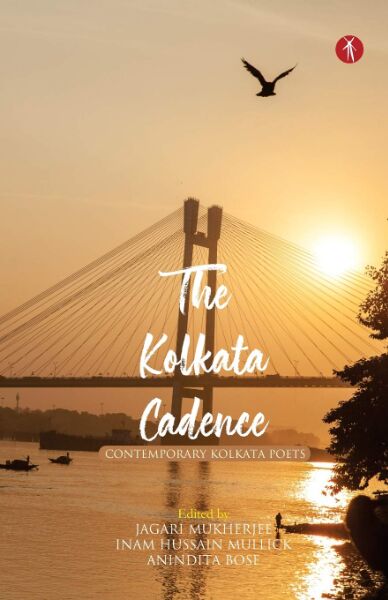Imprint of cumulative changes
The experimental collection takes the readers through the lanes of the past, invokes nostalgia and creates sync with the ever-changing life of Kolkata through varied verses

As a probasi Bengali, I've always seen Calcutta through the eyes of writers and tried to seek mirrored images during my occasional visits to the city of my ancestors. Kolkata Cadence, the cultural landscape viewed by fresh eyes, is just what suits my taste and acts as a counterpoint to my nostalgia. Featured here are 'contemporary Kolkata poets' who write candidly about the simultaneity of many existences in this turbulent space. Jorasanko coexists with hovels in the back lanes, the ramshackle tram snakes its way past imposing high rises, the Hooghly river, shrivelled along its embankments, still looks beautiful under the aasarh moon. The 'Calcutta chromosome' mutates once again to capture this vibrant city that writers love, whether living there or recalling its haunting attractions.
The editors, Jagari Mukherjee, Inaam Hussain Mullick and Anindita Bose have brought 25 poets into this anthology, attractively packaged by the publisher. My journey through this book is more by the themes than the authors as I am fascinated by how the cadences — the nuanced waves — flow over the artefacts. Poetry is in the soil, ether and history of the city, inviting words and thoughts to capture the fleet-footed emotions. In the words of Gopal Lahiri: "The narrow shadow of the pillar flickers/candle lights fade into the hollow of life". For Amit Shankar Saha, poetry is the search for metaphors for "dark times" and "unseason season." I like the provisionality of such vocabulary as though the writer is breaking past the limited resources of the standard language.
Truly Kolkata, changing its name, its affiliations, its institutions, is a city in perennial flux. The stately old mansions are now crumbling into decay yet resonating with the voices of the dead. This picture evokes many thoughts. Mallika Bhaumik's "Lost Property Box" and Kiriti Sengupta's "On the Richter Scale" are sophisticated excursions into the memories that old walls continue to retain. Calcutta appears often as a pulsating body as in Raja Chakraborty's lines, "Amidst the mayhem of motor cars/And multitudes of faceless on-goers/fighting the belching smoke," or in Anjana Basu's images, "The voices, the birds and the dying fish/The city flits from dream to dream/To hell." It's a tense love and hate relationship with the place, also the abode of warm human contacts, of friendships, love, sexuality, trauma, and violence. Such density exists only in the layers of a complex urbanity, caught on the wing of poets such as Joie Bose ("I love your many facets/you're my prism"), Linda Ashok ("the blanket I wear smells/of a lost town) and Bina Sarkar Ellias ("the bare feet of a rickshaw-wallah/etched footprints on my skin").
What happens then to traditions such as the uncomplaining mother slaving in the kitchen? Some remarkable retakes of this stock image are found as in Ananya Chatterjee's lines:
Ma, though, chokes
Every now and then
It's always the fish bone
in her throat she says
We believe her... my sister and I.
Another kind of challenge to traditions speaks through Sanjukta Dasgupta's emotive poems. In powerful lines, "Sita's Sisters" asks about the anger behind the silence, and the continued violations of a woman's integrity. "Thousands and thousands of Sita's sisters/Programmed parrots/Pathetic puppets/Remote-controlled robots." On Mahatma Gandhi, Sanjukta adopts the path of ironical humour in the "Dhoti Dance": "The frail old man in a dhoti led the British such a dance/that their pantaloons and pajamas slipped off as they/pranced and danced."
This anthology has a refreshing air of experimentation, most of which is successful. Poetry in rhyme, blank verse, haiku and poetic prose appear variously. I was, however, a little daunted by four introductory pieces: an exuberant Foreword by global writer Sanjeev Sethi, followed by separate 'editorial notes' by the team members. Sethi has a charming insider-outsider perspective which I enjoyed. For the editors, one defining vision framing the book may have sufficed so long as it accommodated the highly perceptive individual statements. In fact, the addition of poems by each of them, published poets as they are, would have enriched the volume further.
Altogether, it's been a delight to savour the rich and sensitive collection. The minutiae of Calcutta/Kolkata, this eternal city of soul-searching writers, is poetically rendered with acumen and understanding.



